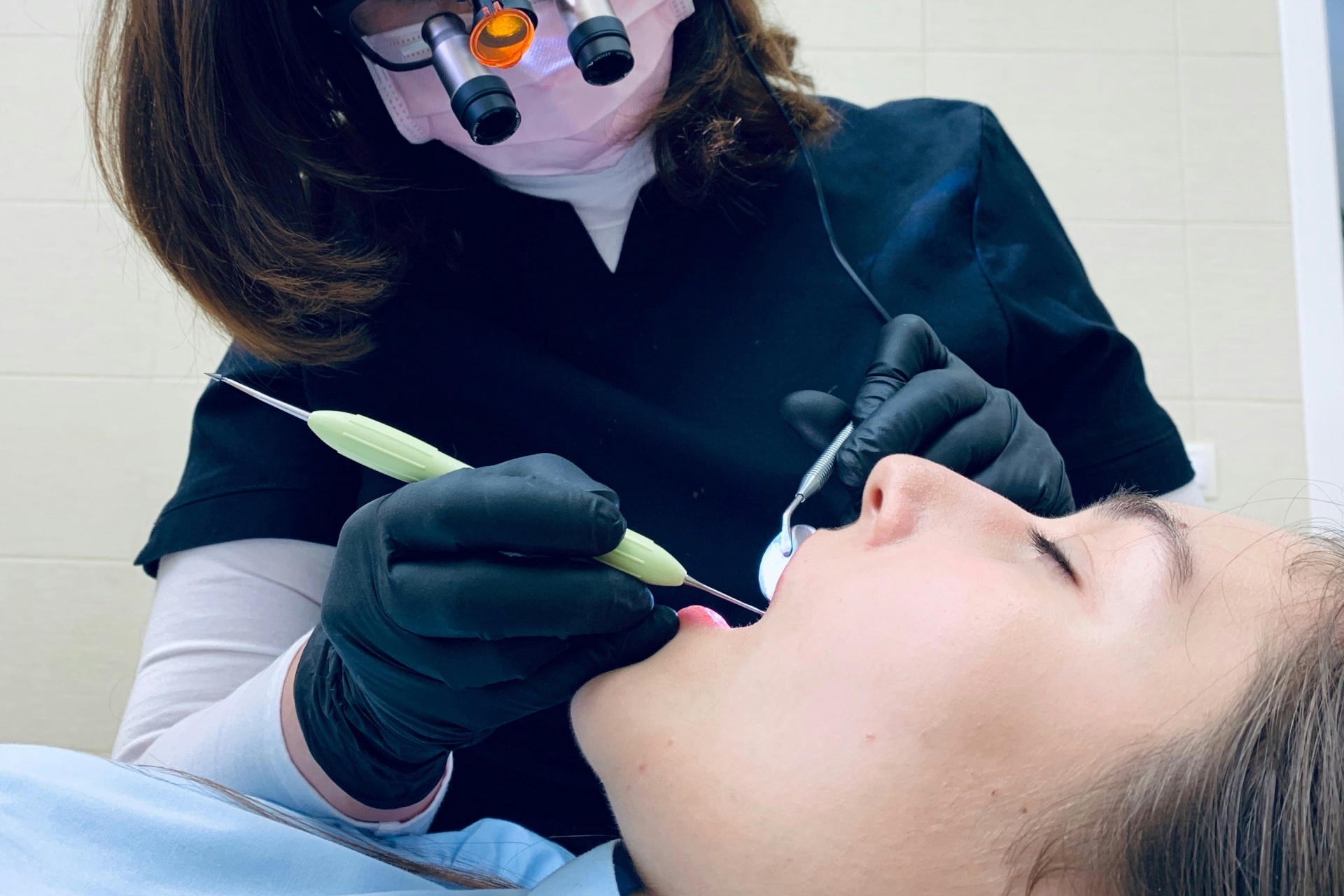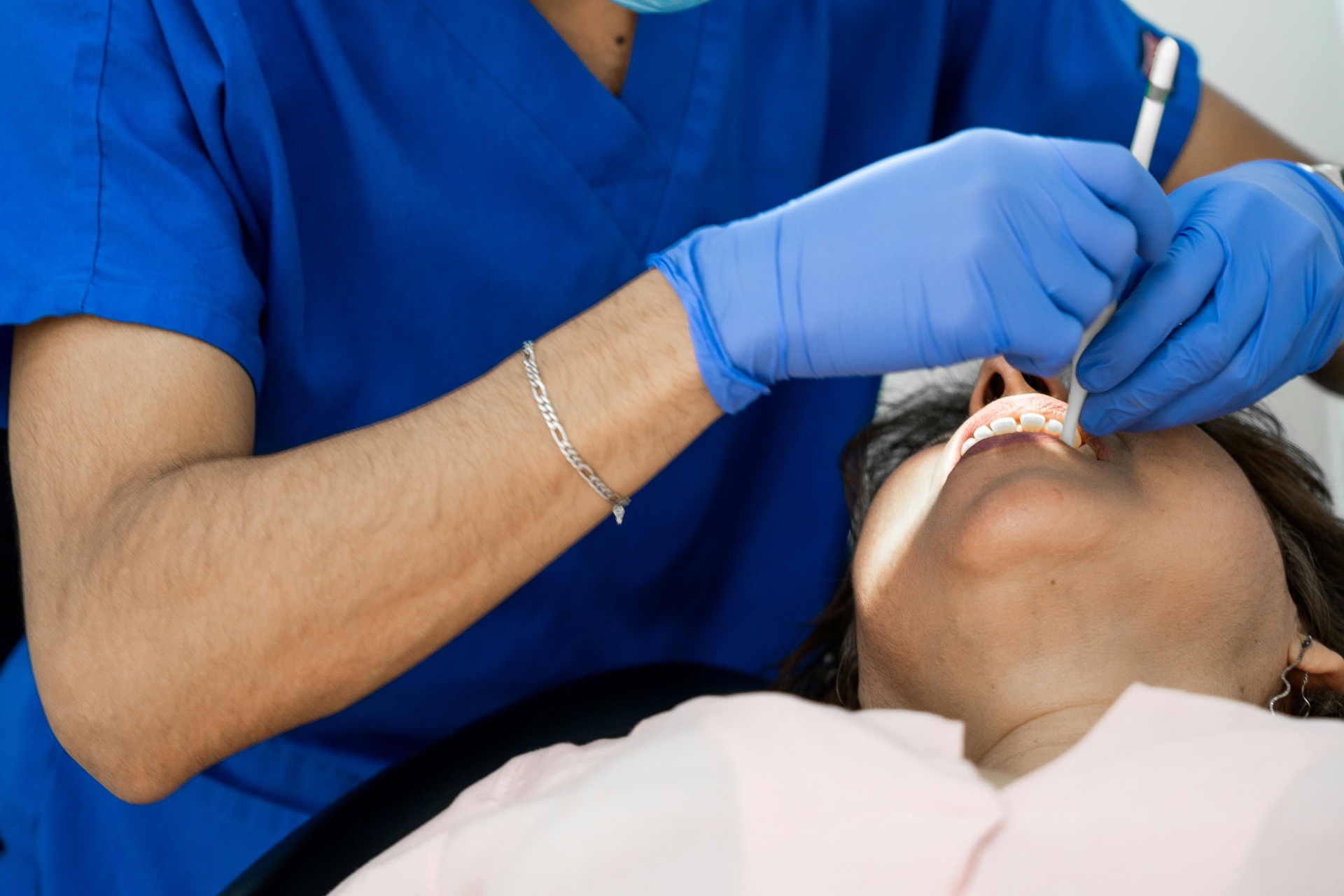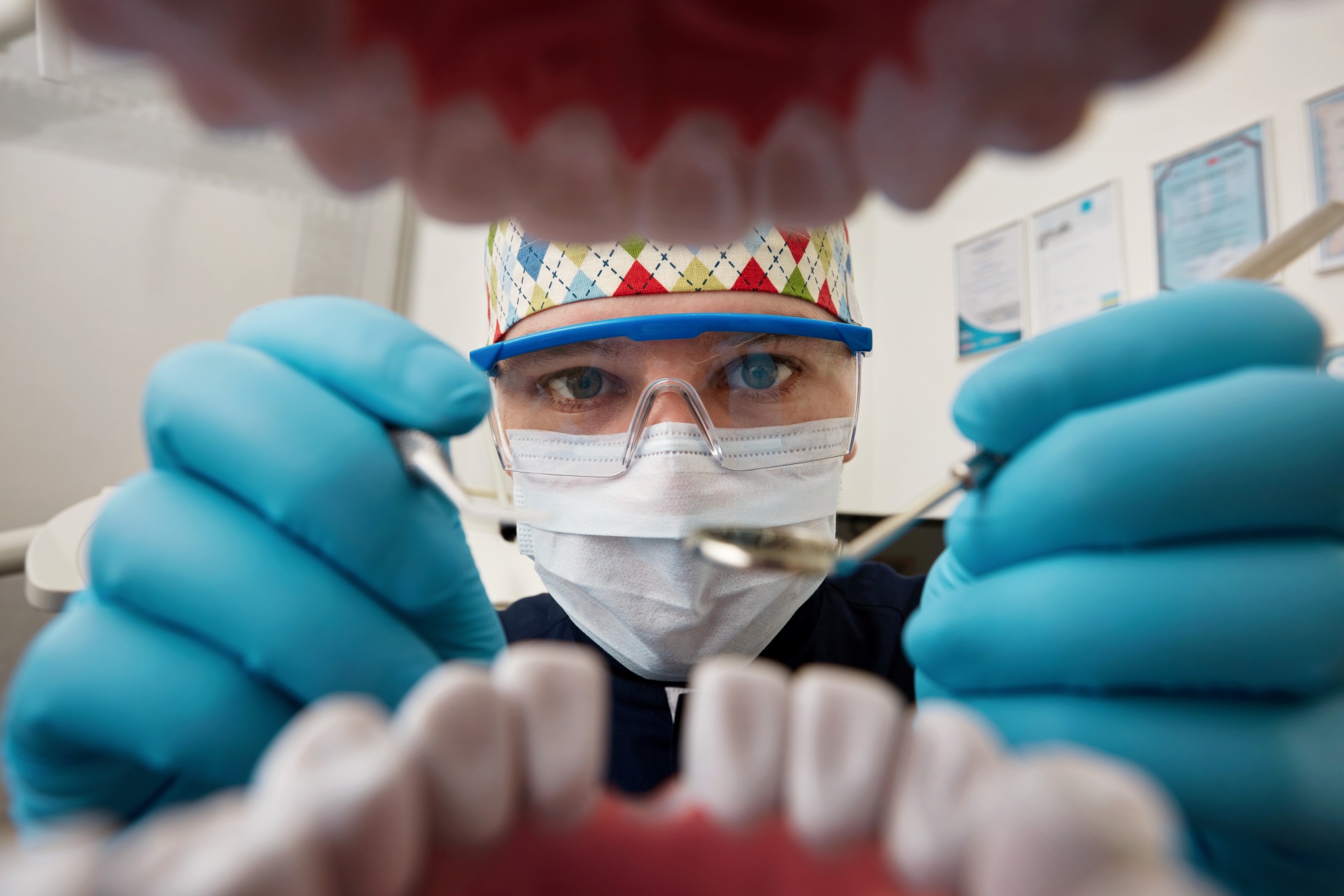
When bacteria and tartar start building up around the roots of your teeth—that’s a recipe for a lot of potential dental issues that are going to cost a pretty penny. So, before things get worse, your dental care provider might recommend scaling and root planing or a deep teeth cleaning.
What is Scaling and Root Planing (Deep Teeth Cleaning)?
Scaling and planing (SRP) is what dentists call a “deep teeth cleaning.” It’s just like regular teeth cleaning except dentists clean the roots of your teeth and deep beneath your gums. And as the name suggests, SRP is done in two parts.
Tooth scaling gets rid of plaque and tartar above the gumline. Root planing removes plaque and tartar below your gumline. Doing both ensures that your teeth are free from any buildup of bacteria, plaque, and tartar, which gives a lot of benefits to your oral health.
When Do You Need a Deep Teeth Cleaning
 While only a dentist can confirm if you need a deep cleaning, there are some warning signs you can look for at home. If you notice any of these, it might be time to schedule a checkup:
While only a dentist can confirm if you need a deep cleaning, there are some warning signs you can look for at home. If you notice any of these, it might be time to schedule a checkup:
Persistent Bad Breath or a Bad Taste
If your breath still smells bad even after brushing and flossing, it could mean bacteria are trapped deep under your gums. These bacteria produce sulfur compounds, which create a foul smell and leave an unpleasant taste in your mouth.
This is often a sign of gum disease, as the infection allows bacteria to multiply in areas that regular brushing can’t reach. If mouthwash and good oral hygiene aren’t helping, a deep cleaning may be needed to remove the bacteria at the root of the problem.
Gums That Bleed Easily
Healthy gums don’t bleed when you brush or floss. If yours does, it could be a sign of gum inflammation or early gum disease. Bleeding gums often indicate gingivitis, the first stage of gum disease, which occurs when plaque and bacteria build up along the gumline.
Left untreated, this can progress into periodontitis, a more serious infection that damages gum tissue and bone. If you frequently see blood in the sink after brushing or flossing, it’s worth getting checked out by a dentist.
Red, Swollen, or Tender Gums
Gums that look puffy, feel sore, or are darker than usual might be reacting to a buildup of bacteria under the surface. Inflammation is your body’s response to infection, and swollen gums are often a sign that bacteria have irritated or infected the tissue.
If your gums feel tender to the touch, look inflamed, or appear shiny, it could indicate a deeper issue requiring professional cleaning.
Receding Gums
If your teeth look longer than they used to, or you notice more of your tooth roots exposed, your gums could be pulled away due to infection. Gum recession is often a sign of periodontitis, where bacteria weaken the attachment between your gums and teeth.
As gums recede, they create deeper pockets where more bacteria can hide, making the problem worse. This not only affects the appearance of your smile but also increases sensitivity and the risk of tooth loss.
Loose Teeth or a Change in Your Bite
If your teeth feel wobbly or don’t fit together the same way they used to, it could be a sign that gum disease is weakening their support. Advanced gum disease causes bone loss, which reduces the stability of your teeth.
Over time, this can lead to shifting teeth, gaps, or even tooth loss. If you notice any changes in the way your teeth align or how your bite feels, it’s important to get checked before the problem worsens. We want to prevent having a root canal or extraction.
Tartar Buildup Along or Below the Gumline
Once plaque hardens into tartar, you can’t remove it at home. If you see a yellowish or brownish buildup along your gums, it means bacteria have been sitting there long enough to calcify. Tartar traps even more bacteria, leading to inflammation and infection.
Because it can’t be brushed away, professional cleaning is the only way to remove it. When tartar stays on your teeth for too long, there’s a heightened risk of gum disease and deep pockets forming.
What Happens in a Scaling and Root Planing Procedure (Deep Teeth Cleaning)?
 Deep cleaning isn’t all that complex when compared to a regular prophylaxis procedure. To help you set expectations, here’s a breakdown of what happens during scaling and root planing:
Deep cleaning isn’t all that complex when compared to a regular prophylaxis procedure. To help you set expectations, here’s a breakdown of what happens during scaling and root planing:
Step 1: Numbing Your Gums
Local anesthetic is typically applied to numb your gums. You won’t feel any pain during the entire process. However, there might be vibrations or pressure from the dental instruments used to remove plaque and tartar.
Step 2: Removing Plaque and Tartar (Scaling)
After numbing, your dentist will remove plaque and tartar buildup above and below the gumline. When plaque isn’t removed, it hardens into tartar or “dental calculus.” Dentists will use ultrasonic scalers to break apart tartar deposits and spray water to wash away the debris.
Step 3: Smoothing Your Tooth Roots (Root Planing)
After scaling, your dentists will smoothen out the rough areas on the tooth roots to prevent bacteria from reattaching and make it harder for plaque to find spots where it can accumulate. The smoothing process also helps the gums to heal and reattach to your teeth.
Step 4: Applying Antibiotics (If Needed)
After scaling and planing, your gums and teeth will need time to heal, making them susceptible to bacteria. To help with the healing process, your dentist might place an antibiotic gel around the roots, especially if you have higher risks of infection.
Does Deep Teeth Cleaning Hurt
Teeth cleaning doesn’t hurt at all! But you could feel some pressure on your teeth and gums during the procedure. Plus, your dentists would likely numb your gums with local anesthetic to keep you comfortable.
After the deep teeth cleaning, you might get sensitivity to hot and cold for a few days. That’s because your root surface might be exposed and gum tissues would still need to heal. Doctors could also recommend over-the-counter pain relievers to help manage the soreness.
How Much Does Deep Teeth Cleaning Cost
 The cost of SRP varies depending on several factors including the state you’re in, how severe your gum disease is, and how much your insurance can pay. Dentists will also charge per quadrant of your mouth (there are four quadrants).
The cost of SRP varies depending on several factors including the state you’re in, how severe your gum disease is, and how much your insurance can pay. Dentists will also charge per quadrant of your mouth (there are four quadrants).
In Washington, the price ranges between $150 to $300 per quadrant. For more advanced SRP, the cost might go up to the $300 to $450 range. To get a more accurate estimate, dentists would need to do an oral X-ray exam.
If you have state insurance, in most cases, SRP is covered every 2 years. If you have Private insurance, for example, Delta Dental, Premera, Aetna, etc., SRP coverage depends on your plan. At btyDENTAL, we do our best to verify SRP coverage before your visit.
If you’re in the Washington area and have concerns about affordability or insurance coverage or have no dental insurance benefit, give us a call in any one of our branches so we can provide you with options for payment plans and memberships.
The Benefits of Getting a Deep Teeth Cleaning
Just a quick reminder—people with healthy gums and teeth don’t typically need a deep teeth cleaning. The benefits you get are more on the remedial side. There’s a bit of damage already but not too severe to require more specialized cleaning. So, if you get an SRP, you’ll have:
- Fresher, Odor-Free Breath: A deep teeth cleaning ensures that your gumline is free from any deep-seated bacteria and buildup that causes halitosis.
- Improved Overall Oral Health: SRP clears out hidden plaque and bacteria and stops inflammation, infections, and potential gum diseases.
- Protection Against Tooth Loss and Gum Recession: SRP removes deep bacteria, allowing gums to heal, reattach, and keep your teeth securely in place.
- Reduced Risk For Advanced Gum Disease: A deep teeth cleaning clears out deep plaque and bacteria, stopping infections before they can damage gums and bone.
Key Takeaways
Keeping your gums healthy is just as important as keeping your teeth clean. Deep teeth cleaning removes harmful plaque and bacteria from beneath the gumline, preventing gum disease from getting worse.
Without it, untreated buildup can lead to infection, tooth loss, and more serious oral health issues down the road. If you’re in the Washington area and want to check if you need a deep teeth cleaning, book an appointment with btyDENTAL today!

